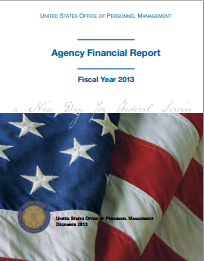- Home
- Agencies
- Department of Agriculture
- Department of Housing and Urban Development
- General Services Administration
- Department of Commerce
- Department of the Interior
- National Aeronautics and Space Administration
- Department of Defense
- Department of Justice
- National Science Foundation
- Department of Education
- Department of Labor
- Office of Personnel Management
- Department of Energy
- Department of State
- Small Business Administration
- Environmental Protection Agency
- Department of Transportation
- Social Security Administration
- Department of Health and Human Services
- Department of the Treasury
- U.S. Agency for International Development
- Department of Homeland Security
- Department of Veterans Affairs
- Goals
- Initiatives
- Programs
Primary tabs
Strategic Objective
MG05.02 Institutionalize corporate prioritization
Strategic Objective
Overview
- Defining roles of Associate Directors, Office Heads, and the Director in the prioritization process.
- Informing senior leadership on the prioritization process and its associated criteria drivers.
- Aligning and tracking the agency’s budget and expenditures to strategic goals.
- Prioritizing discretionary activities and advising senior leadership of prioritization recommendations.
- Aligning, tracking and reporting the agency’s budget by strategic goal for all funds quarterly.
Progress Update
Following the FY 2014 implementation of the budget prioritization tool, which provides structure and uniformity in validating and determining funding requirements, early in FY 2015, OPM completed a lessons learned exercise to improve the mechanics of the budget prioritization tool. As a result of the lessons learned exercise, OPM made updates to the prioritization tool to help ensure consistency in application, provide clarification regarding requirement definitions, and streamline data entry and consolidation. In the short-term, OPM will continue to use the spreadsheet-based tool, though efforts are underway to implement an automated tool. During FY 2015, the agency completed market research to explore alternatives to enhance budget formulation activities and incorporate components of the prioritization tool.
Also in FY 2015, OPM expanded its CFO Financial Dashboard and metric reporting activities. The dashboard is located on the agency Intranet, available to all OPM employees, and provides key financial data and metrics, allowing senior leaders and program managers to monitor resource spending. In addition to sharing information through the dashboard, the Office of the Chief Financial Officer routinely informs agency leaders of their financial performance through informational briefings. In FY 2015, the agency introduced reporting of expenditures against planned spending by OPM strategic goals. OPM shared its strategic goal reporting approach with other Federal agencies to help them implement similar reporting within their organizations.
During the FY 2017 budget formulation process, OPM introduced multi-year budget planning to coincide with the OPM Strategic Plan. In doing so, OPM is better able to predict the resources associated with completing agency priorities and commitments through the life of the current Strategic Plan.
While OPM made significant progress, an area for further improvement to the budget prioritization tool is incorporation of minimum and maximum resources levels (costs or level of effort) needed to perform an activity or requirement, which would allow for better and more efficient budgeting. Additionally, while the current prioritization tool is efficient in capturing the required data and key elements, this spreadsheet-based process can be enhanced by developing a product that provides additional functionality and reporting capabilities. OPM has undertaken efforts to address both concerns as the agency develops requirements to implement an automated budget management system.
OPM, in consultation with OMB, has deter-mined that performance toward this strategy is making noteworthy progress.








